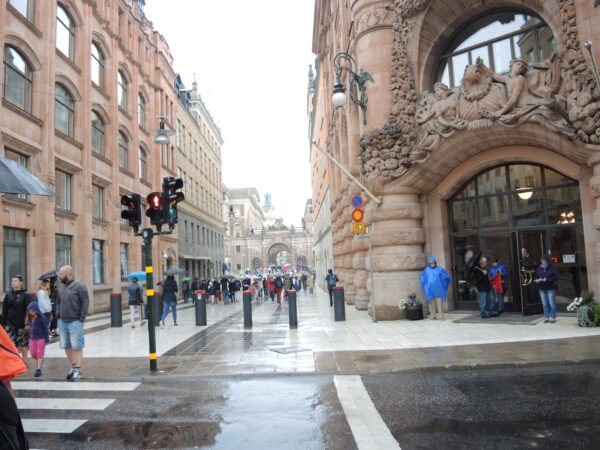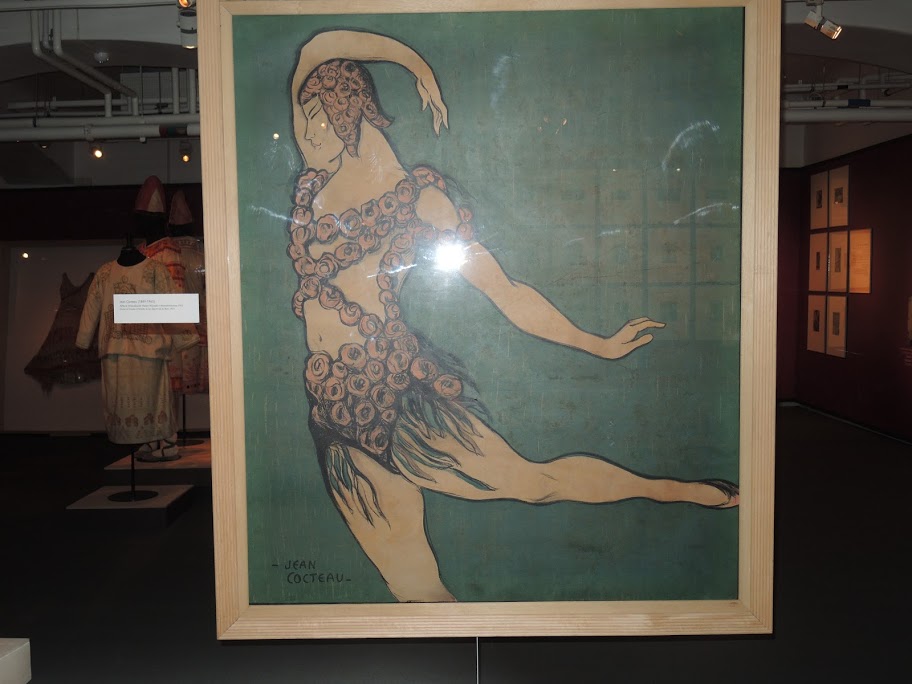The dancing part.
It’s Thursday morning. And it’s raining again. Steadily. Still, those of us who are booked on the cruise to Helsinki can use the few remaining hours between breakfast and boarding the bus to take us to the ferry – which will look more like a cruise ship than a ferry – to squeeze in a visit to one or two final Stockholm sites.
I considered, as is my wont, trying to find my way to the cemetery at Solna. And the inclination was a strong one. Alfred Nobel. August Strindberg. Ulrich Salchow. And, of course, Ingrid Bergman. Even Frank’s wife, Heidy, had asked me to send special regards to the late actress on her behalf. But caution, perhaps a bit of common sense, and my reluctance to feel part of a cinematic cliché ultimately prevailed.
Caution arose from the cemetery’s location about five kilometers from the hotel meaning the better part of an hour on foot or a 15-minute taxi ride. (Had I chosen to go, I would have opted for the latter. Time was of the essence and it was raining.) Finding a taxi outside from the hotel to the cemetery would be easy. Common sense dictated having less confidence in the ease of finding a return taxi. Adding to my caution was that, sans Erin and her ever so reliable instinctive grave finding GPS, I considered the amount of time I might need to locate the four graves on my own might be more than I had available. And then, of course, it was raining. Funerals and cemetery visits in the rain. Does any greater cliché exist? I think not.
I decided the wiser choice was to walk east along Olaf Palmes Gata and turn south on Drottninggatan toward Gamla Stan.

That would allow me to visit the Dance Museum, perhaps the Nobel Museum and grab some lunch at the Grillska Huset. So, I gathered my recently purchased umbrella and started on my way. Before we get to the Dance Museum though, I should say a few words about the walk along Olaf Palmes Gata to the intersection with Drottninggatan since I passed this spot more than once in my brief time in Stockholm.
On 11 December 2010 this intersection was the site of the first suicide bombing to occur in one of the Nordic countries when a car bomb exploded injuring two people. A second explosion followed about 10 minutes later and several blocks south of there – at another intersection I’d already crossed more than once. The sites aren’t marked but I was vaguely aware of their history. Fortunately for the likely thousands of people doing their Christmas shopping, these bombers were not particularly competent and not all of the explosive material detonated. Since I’d been thinking of graves and cemeteries, I had to mention this tragedy. But now I’m done with this topic and all morbidness is banished.
It’s time to dance.
This poster by Jean Cocteau, a noted French novelist and filmmaker, is of Vaslav Nijinsky who many consider the greatest male dancer of the early 20th century. It’s on display in the Dance Museum (Dansmuseet) in Stockholm. This museum was the brainchild of Rolf de Maré and is an outgrowth of the International Archives for the Dance, the museum he founded in Paris in 1933 which was the world’s first museum solely devoted to dance.
A Swede by birth, de Maré moved to Paris as a young man and while there he and Nils von Dardel founded the Ballets Suédois (Swedish Ballet) at the Théâtre des Champs-Élysées that de Maré owned. They managed the troupe for five years from 1920-1925. During that time, de Maré helped launch the career of filmmaker René Clair and a young American expat named Josephine Baker frequently performed at his theater.
Ultimately, his dance company failed and he lost a significant amount of his family’s fortune. But those pockets were deep and his interest in the arts and particularly in dance never waned. He began traveling the world and collecting dance related artifacts. By the end of World War II, the collection he’d amassed grew too large for him to maintain and he attempted to donate it the French government. The French (being French) accepted some, but not all of his collection. He took the rejected artifacts and collections – mostly from his Swedish Ballet and many of the pieces that represented non-western dance – to Sweden where he founded the Dance Museum. The original museum was located in the basement of the Royal Opera House in Stockholm and moved several times before coming to rest at its current location in 2013.
In addition to the artifacts from de Maré ‘s Swedish Ballet, the collection has important pieces from late 18th century Asia consisting of masks, costumes, shadow puppets, and musical instruments from India, Indonesia, Japan, China, Thailand, and Tibet. The museum also has a significant African collection, mainly masks, from Burkina Faso, Mali, Nigeria, and Congo.
Perhaps the most historically important pieces in the collection are from the Ballet Russes founded in Paris by Sergei Diaghilev at about the same time as de Maré founded the Ballets Suédois. The Ballet Russes is considered by many as the most influential ballet company of the 20th century, in part because of its assault on the staid tradition of western classical dance, but also because of the collaborations Diaghilev, whose portrait hangs in the museum, fostered.
In addition to Vaslav Nijinsky and his sister Bronislava, Diaghilev also engaged such choreographers as Michel Fokine and George Balanchine both of whom were also on the long list of renowned men who danced with the company. The list of women, equally long featured Anna Pavlova and Alicia Markova among others.
But Diaghilev didn’t limit his innovative collaborative approach to dancers alone. The poster portrait above is by Léon Bakst but Diaghilev also worked with Pablo Picasso, Jean Cocteau, Henri Matisse, and Coco Chanel as designers. He also commissioned orchestral works from Igor Stravinsky and Claude Debussy.
During my visit, I spent time admiring many of the Ballet Russes costumes from several important dances they staged. Many of the Asian and African artifacts were also on display. In all, I had a lovely morning and left the Dansmuseet to cross the bridge into Gamla Stan for lunch.

